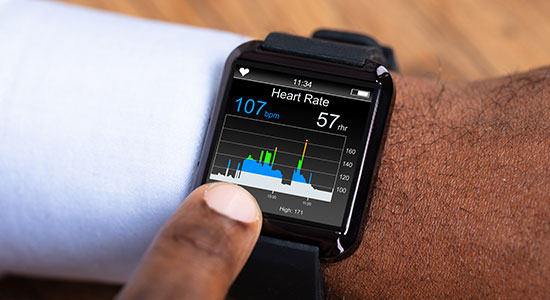
In 2017, a River Falls company made news when it offered employees the chance to have an RFID chip injected into their hand.
More than 40 employees of Three Square Market, a technology company that provides self-service mini-markets to hospitals, hotels, and company break rooms, took the leap and had chips around the size of a large grain of rice implanted in their hands.
The RFID chips are passive – without batteries, they get their power from an RFID reader when it requests data from the chip – and store certain personally identifying information, allowing employees to wave their chip-implanted hand (instead of using a pass or security code) to do things such as get into their office, log on to computers, and make purchases at the company cafeteria.
Three Square paid for the chips (installed by a local tattoo artist), had a party for the event (serving chips and salsa of course), and made the entire process voluntary.
Thousands in Sweden
While the use of implanted RFID technology is prevalent in pets in the United States, it is not the norm with employees – at least not yet. Countries such as Sweden, however, have seen more widespread use of this technology: according to an Oct. 22, 2018, NPR article, thousands of people have microchips inserted into their hands.
In 2006, Wisconsin was actually the first state to institute legislation making it illegal for anyone –including employers and government agencies – to implant RFID microchips in people without their consent. According to Wis. Stat. section 146.25, anyone who does will face fines of up to $10,000. Each day of continued violation constitutes a separate offense.
Wearables in the Workplace
As people become more and more comfortable with voluntarily using data tracking and collecting technology (check your wrist as you are reading this to see how many apps you have on your smartwatch), it is only a matter of time before everyone is intersecting with wearable technology in the workplace in some form or fashion.
 Eric Meier, U.W. 2002, is a partner in Husch Blackwell’s real estate, development, and construction industry team, where he concentrates his practice on construction and business litigation, risk management, and planning.
Eric Meier, U.W. 2002, is a partner in Husch Blackwell’s real estate, development, and construction industry team, where he concentrates his practice on construction and business litigation, risk management, and planning.
Luckily, there are much less physically intrusive ways for employers to incorporate wearable technology into the workplace than RFID chips. On one end of the spectrum are things like heating jackets and cooling vests – not necessarily new technologies, but these devices have improved leaps and bounds over the years as batteries have become smaller and more powerful.
On the other end of the spectrum are products like smart hard hats (which use brain waves to measure fatigue) and sophisticated protective eyewear that can allow users to overlay 3D building plans over a job site.
While the new technology is meant to make workplaces and employees safer and more efficient, the technology also creates a tremendous influx of data. The data are likely to mean different things to different parties, and it is entirely possible that a variety of departments in a company (operations, finance, safety, risk, legal, human resources, etc.) will find benefits from analysis of the data.
Regardless of who is using the data, companies must keep in mind certain legal and business considerations associated with the equipment, as well as the collected information.
OSHA’s Considerations
Occupational Safety and Health Administration (OSHA) is clearly invested in the increased use of wearable technology in the workplace. In addition to software recording employee jobsite safety information that previously was not available, it is also creating guidance as to proper usage and risks associated with wearable devices.
For example, OSHA issued a bulletin on Jan. 18, 2019, on how to prevent fire and/or explosion injury from small and wearable lithium battery powered devices. The bulletin lists various guidelines to incorporate lithium battery safety and training into an employer’s safety and health program.
For safety purposes, it is wise to have employee training relative to the technology. As an example, some employers use a device that warns employees of exposure to toxic fumes. Employees should be trained how to respond to warnings to ensure the safety benefits from the technology are achieved.
Use of Data
On the data side, companies must understand what type of information is being collected, who is able to access the data and for what purposes. Companies should engage in training of the authorized employees on how to properly use and protect the information.
Another important consideration is notice to the employees about the information that will be collected about them, how the information will be used, and how it may be disclosed.
Finally, companies must understand what data privacy laws and requirements might be impacted, depending on the nature and type of personal, health, or other data that is collected.
Wearables in Litigation
From a litigation perspective, information from wearable technology could be instrumental in establishing location and activities at or around the time of an incident.
Companies should update their data retention and destruction policies to encompass the data obtained from any new technology, and make sure those entrusted with preserving records are aware of the new information available.
Further, if a lawsuit commences, parties will want to request the wearable technology data and company policies and procedures related thereto.
More to Come
According to Forbes, the number of wearable technology devices is set to double by 2021. Whether a smartwatch, hat, boots, clothing, or an implanted RFID chip, odds are that companies will expand their use of wearable technology in the workplace.
It is important that, beyond just selecting devices that provide some sort of safety and/or business benefits, companies are mindful of the business practices that must be updated to protect themselves from the lurking legal risks associated with the new information channels and with additional monitoring and control of their employees.
This article originally appeared in the State Bar of Wisconsin’s Construction & Public Contract Law Section Blog, published by the Construction & Public Contract Law Section (login required).
